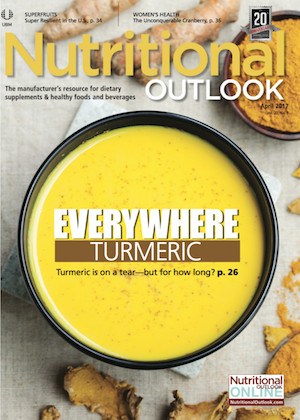Is Agave Syrup Still a Promising Sweetener?
While agave syrup rose to popularity a decade ago as a sugar replacement, in recent years agave syrup has also come under fire from detractors concerned about the syrup’s high fructose content.
Photo © iStockphoto.com/Donki13

Agave syrup has seen its ups and downs over the years. While the syrup, also marketed as “agave nectar,” rose to popularity a decade ago as a sugar replacement, in recent years agave syrup has also come under fire from detractors concerned about the syrup’s high fructose content.
So, is this the end of the story for agave? Not according to the agave suppliers we spoke to, who say there are still many ways to take advantage of the benefits of agave syrup as a sweetener. Market researcher The Freedonia Group (Cleveland) also predicts continued growth for agave syrup. In its newly released report, “Alternative Sweeteners Market in the U.S., 9th Edition,” Freedonia forecasts that the agave market will still continue to grow through 2020, albeit at a slightly slower rate (3.9% CAGR) than in the past. Here’s a look at how companies are continuing to build excitement around agave.
Agave’s Benefits
Food and beverage formulators may find that agave’s sweetening properties outperform those of other syrups and natural sweeteners in some ways. “Agave syrup does not bring forth bitterness like stevia and has a greater Maillard reaction (browning effect) than tapioca or rice syrups,” says Tonya Lofgren, marketing manager for organic-ingredients supplier Ciranda Inc. (Hudson, WI). “Outside of high-fructose corn syrup, agave syrup has the highest sweetening power when compared to tapioca, rice, or corn syrup. It delivers instant sweetness which dissipates quickly.”
In terms of product applications for agave, beverages seem to be the best bet, where agave may provide some boons over other sweetening syrups. Lofgren says, “In beverages, agave syrup will deliver a pleasant sweetness but typically does not affect the mouthfeel or juiciness of a product like tapioca syrup will.”
“We have found our greatest successes with beverages of all kinds, from carbonated to teas,” says Thom King, CEO and president of natural-sweeteners supplier Steviva Ingredients (Portland, OR).
According to Lofgren, due to its functional properties, agave syrup does not perform well as a sweetener in foods like hard candies or soft chews “where the crystallization process is necessary. Starch-based glucose syrups, such as tapioca, are the preferred choice for these applications.”
New Flavors
Agave syrup’s flavor is most often described as possessing a hint of caramel, which means it “pairs well with warmer flavors such as cardamom, cinnamon, ginger, nutmeg, almond, maple, anise, and cocoa,” says King. “We have launched these flavors with quite amazing success.” One of Steviva’s latest additions to its Nectevia agave nectar line is Nectevia Masala Chai Spice.
In addition to describing agave as neutral flavored, Claudia Cetto, administrative coordinator for agave-ingredients supplier The iidea Company (Guadalajara, Mexico), says that agave syrup “emphasizes the natural flavor of food and drinks, whereas sugar might ‘hide’ the natural flavor of food.”
Combination Sweeteners
Given concerns over agave’s high fructose content, agave’s greatest use today may be in combination with other natural sweeteners. King says that Steviva created Nectevia as a combination of agave and stevia as a way to address some of those concerns.
“Agave is made of naturally occurring minerals, inulin, and fructose. Though fructose is low glycemic, doses over 25 g per day can increase blood lipid levels and triglycerides,” King explains. “By adding stevia, we have increased the sweetness [of Nectevia] to over four times more than that of regular agave so the consumer uses 25% as much.” As a result, he says, the total fructose content of Nectevia is under 3 g per serving, which he says will sweeten 16 oz of liquid. In this combination, agave itself also provides benefits-namely, helping to mask some of the off-notes of stevia.
Lofgren says agave syrup can also pair well and help to mask the off-notes of another high-intensity sweetener, monk fruit. She also suggests pairings with other syrup sweeteners. “Combining agave syrup with glucose syrups like rice or tapioca can provide a balance of sweetness and functionality, while giving greater control on shelf life, mouthfeel, sweetness, and texture, than any syrup can provide on its own.”
Cetto says that her company is able to not only combine agave syrup with other sweeteners but also with ingredients like fiber.
These types of alternatives highlight how agave can still play a role in the sweeteners market. Ultimately, consumers will decide how best to use agave. Lofgren says, “With high-fructose corn syrup’s bad rap, it’s natural that questions surface about any fructose syrup, but as with most everything in life, moderation is key.”
“As the ‘natural’ sweetener market grows, agave syrup will continue to be explored as a viable option, especially when combined with other liquid sweeteners,” she concludes.
Also read:
Cargill, Evolva’s EverSweet Fermentation-Derived Stevia Sweetener Could Launch in 2018
New Cassava Syrup Is Fructose-Free Sweetener
What Will FDA Define as a “Natural” Sweetener?

Prinova acquires Aplinova to further increase its footprint in Latin America
April 7th 2025Prinova has recently announced the acquisition of Brazilian ingredients distributor Aplinova, which is a provider of specialty ingredients for a range of market segments that include food, beverage, supplements, and personal care.

























